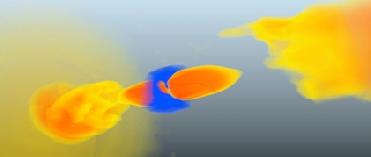
Snapshot of gas temperatures in a three-dimensional computer simulation of a cool-core cluster. The blue ring shows the cool gas accreting onto the central black hole disk; the red and yellow jets show the hot gas ejected by this disk. – Image Credit : E. Scannapieco/ M. Brueggen / ASU
LONDON (BNS): Two researchers have designed a new model, showing that turbulence created by jets of material ejected from the disks of the Universe�s largest black holes is responsible for halting star formation.
The Universe, in its hierarchical set up, has small as well as large structures. Planets like our Earth fit into the Solar System, the Solar system resides in the Milky Way Galaxy, and galaxies combine into groups and clusters.
Clusters form the largest structure of our Universe. Researchers have long known that the gas in the centres of some galaxy clusters is rapidly cooling and condensing, but are puzzled why this condensed gas did not form into stars. Until recently, no model existed that successfully explained how this was possible.
However, the replica developed by Evan Scannapieco, assistant professor in the School of Earth and Space Exploration in the College of Liberal Arts and Sciences at Arizona State University (ASU) and Professor Marcus Brueggen of Jacobs University in Bremen, Germany, reveals that jet-like bursts coming from black holes hinder the cooling process of the core of the clusters.
The study, published in the journal Monthly Notices of the Royal Astronomical Society, quotes
Professor Scannapieco as saying, �There are two types of clusters: cool-core clusters and non-cool core clusters. Non-cool core clusters haven�t been around long enough to cool, whereas cool-core clusters are rapidly cooling, although by our standards they are still very hot.�
Although these clusters can contain hundreds or even thousands of galaxies, they are mostly made up of a diffuse, but very hot gas known as the intra-cluster medium. This intergalactic gas is only visible to X-ray telescopes, which are able to map out its temperature and structure. These observations show that the diffuse gas is rapidly cooling into the centres of cool-core clusters.
At the core of each of these clusters is a black hole, billions of times more massive than the Sun. Some of the cooling medium makes its way down to a dense disk surrounding the black hole, some of it goes into the black hole itself, and some of it is shot outward. X-ray images clearly show jet-like bursts of ejected material, which occur in regular cycles.
But why were these outbursts so regular, and why did the cooling gas never drop to colder temperatures that lead to the formation of stars? Some unknown mechanism was creating an impressive balancing act.
�It looked like the jets coming from black holes were somehow responsible for stopping the cooling,� says Scannapieco, �but until now no one was able to determine how exactly.�
Scannapieco and Brueggen used the enormous supercomputers at ASU to develop their own three-dimensional simulation of the galaxy cluster surrounding one of the Universe�s biggest black holes. By adapting an earlier approach, the two astronomers, for the first time, added the component of turbulence to the simulations.
Turbulence works in partnership with the black hole to maintain the balance. Without the turbulence, the jets coming from around the black hole would grow stronger and stronger, and the gas would cool catastrophically into a swarm of new stars. When turbulence is accounted for, the black hole not only balances the cooling, but goes through regular cycles of activity.
�When you have turbulent flow, you have random motions on all scales,� explains Scannapieco. �Each jet of material ejected from the disk creates turbulence that mixes everything together.�
The study results reveal that turbulence acts to effectively mix the heated region with its surroundings so that the cool gas can�t make it down to the black hole, thus preventing star formation.
Every time some cool gas reaches the black hole, it is shot out in a jet. This generates turbulence that mixes the hot gas with the cold gas. This mixture becomes so hot that it doesn�t accrete onto the black hole. The jet stops and there is nothing to drive the turbulence so it fades away. At that point, the hot gas no longer mixes with the cold gas, so the centre of the cluster cools, and more gas makes its way down to the black hole.
�We improved our simulations so that they could capture those tiny turbulent motions,� Scannapieco said. �Even though we can�t see them, we can estimate what they would do. The time it takes for the turbulence to decay away is exactly the same amount of time observed between the outbursts,� he added.
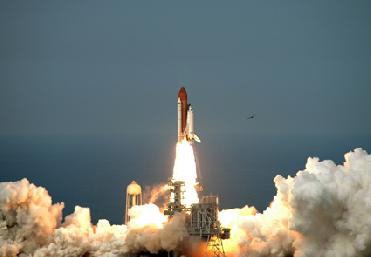 Previous Article
Previous Article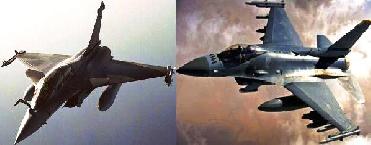 Next Article
Next Article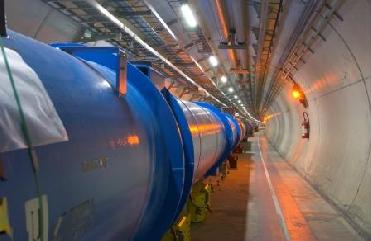
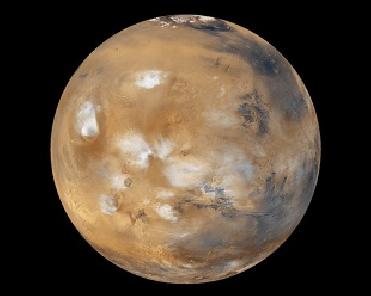
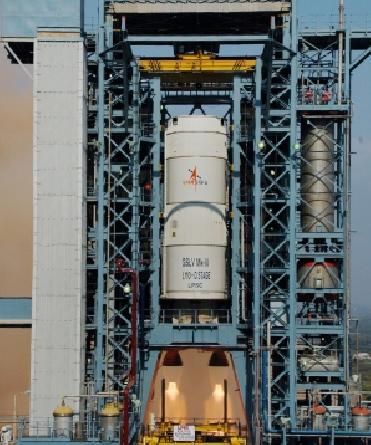









The Indian Air Force, in its flight trials evaluation report submitted before the Defence Ministry l..
view articleAn insight into the Medium Multi-Role Combat Aircraft competition...
view articleSky enthusiasts can now spot the International Space Station (ISS) commanded by Indian-American astr..
view article